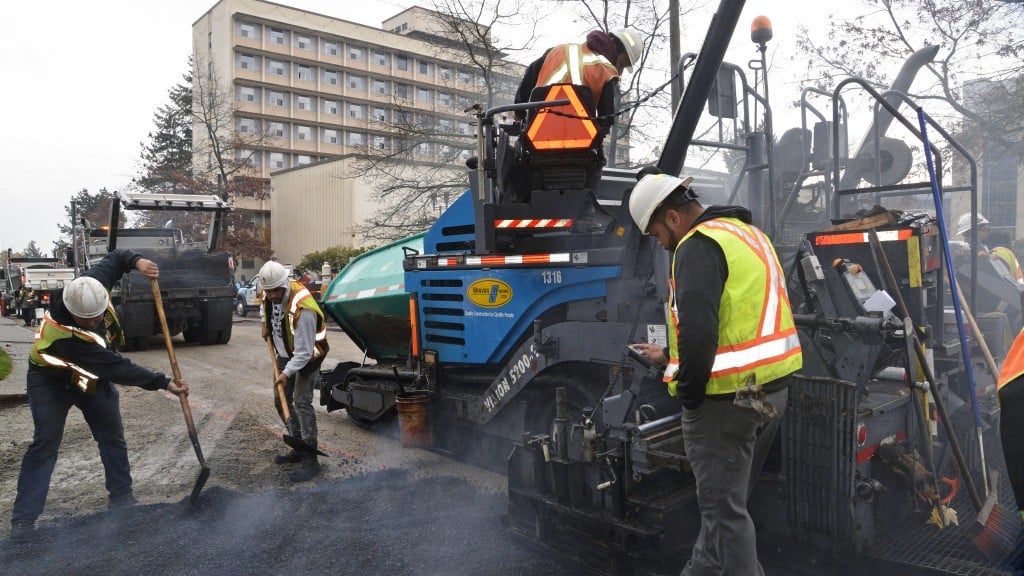
Safe and quality asphalt roadways acquired through proper design and construction, and timely maintenance remains a prime objective for all stakeholders in the roadbuilding industry. However, this quest is challenged by low-bid contract practices, limited budgets, increasing traffic volumes, climate change, use of substandard materials, proliferation of specifications, and many more concerns. Industry-practitioners recognize that these challenges cannot be effortlessly wished away. They require that we consistently strive for the best strategies that can guaranty good quality roadways, fair value for the work undertaken and a healthy competitive market that enables innovation.
The Ontario Road Builders Association (ORBA) and Ontario Asphalt Pavement Council (OAPC) - Council of ORBA through its Quality of Asphalt Review, provides a framework of recommendations on the best approaches to ensure long-term value for safe and quality asphalt roadways.
The Quality of Asphalt Review was commissioned in the fall of 2017 and commenced in the fall of 2018. It was managed by KPMG and consisted of analysis conducted by Texas A&M Transportation Institute (TTI).
The framework focuses on ten relatively straightforward technical facts to serve as reminders in the quest for durable asphalt pavements. They include:
1. Do your homework:
This entails evaluating existing pavement conditions meticulously and performing proper pavement designs to determine the appropriate thickness, selecting the right mix and Performance Graded Asphalt Cement (PGAC) for the project.
2. Encourage mixes that have higher asphalt cement (AC) content:
Studies have shown that mixes with higher AC outperform those with lower AC content. The concept of lowering gyrations, and the Superpave 5 concept, which uses a design air void content of 5 percent instead of the current requirement of 4 percent, are suggested to get more AC in HMA mixes. Regressing air voids for a balanced mix design, is a third approach.
3. Specify a finer gradation for your mix type:
Finer Superpave mixes typically have higher AC content and are more durable and less prone to segregation.
4. Don’t overheat the mix:
Overheating the mix will result in premature oxidation which may lead to cracking. Specifying warm-mix asphalt (WMA) may help alleviate these concerns during late season paving.
5. Include adequate surface preparation in the plans:
uitable surface preparation should be allowed for in the contract documents to ensure the construction of smooth roads.
6. Ensure an adequate bond:
Proper tack coat application ensures that the pavement will perform as designed and help mitigate premature cracking. Good tack coating will also improve compaction.
7. Provide proper pavement density:
Compacting the mat to the required specification limits will ensure long-term durability, lower oxidation (due to long-term aging) and reduce permeability.
8. Produce mix that is uniform and consistent:
HMA that is produced to consistently meet the job mix formula (JMF) and the specification requirement will perform better.
9. Use reclaimed asphalt pavement (RAP) responsibly:
RAP should be utilized in accordance with contract requirements. For higher percentages of RAP, i.e. greater than 15 to 20 percent, a softer PGAC should be incorporated in the mix.
10. Complete quality assurance (QA) testing and inspection:
Proper QA and inspection conducted by qualified technicians and inspectors should be part of any paving project to ensure long-term performance.
Detailed discussions on the above high-level summary are available in fact sheets and technical articles published by the OAPC, which can be found on the OAPC website at: http://www.onasphalt.org/publications/ohmpa_publications/fact_sheets.html. Collectively these technical facts provide industry-practitioners, especially asphalt producers, paving contractors and designers, with a concise quality checklist toward designing, maintaining, rehabilitating and constructing safer, smoother and well-performing asphalt roadways.
Additional considerations in design, production and placement operations of asphalt roadways are adaptive strategies to the impacts from climate change. Changes in temperature and rainfall, along with extreme weather events such as flooding, will have effects everywhere, and road safety is no exception. The effects from climate change, if not properly tackled, could accelerate the deterioration of asphalt roadways and increase the risks of severe damage and will affect road safety. These scenarios further degrade experiences for both road agencies, industry practitioners and the public.
Doubra C. Ambaiowei is the Technical Director at the Ontario Road Builders Association (ORBA) and Ontario Asphalt Pavement Council (OAPC) - Council of ORBA. His work specifically supports all technical requirements to promote the quality use of hot-mix asphalt, and all other roadbuilding materials and construction best practices in general.
The Ontario Road Builders' Association (ORBA) is the voice of the transportation infrastructure sector in Ontario. Our members build the majority of provincial and municipal roads, bridges, transit and transportation infrastructure across the province, and employ in excess of 30,000 workers at peak season. To learn more about ORBA, visit www.orba.org.



